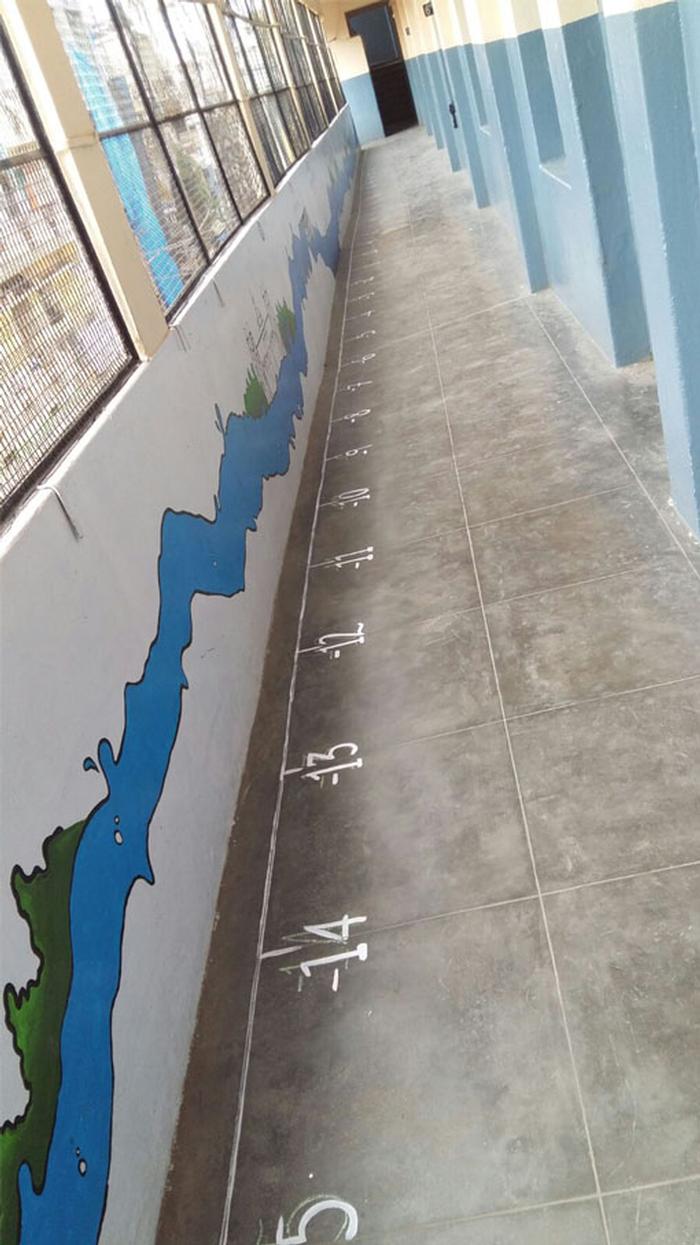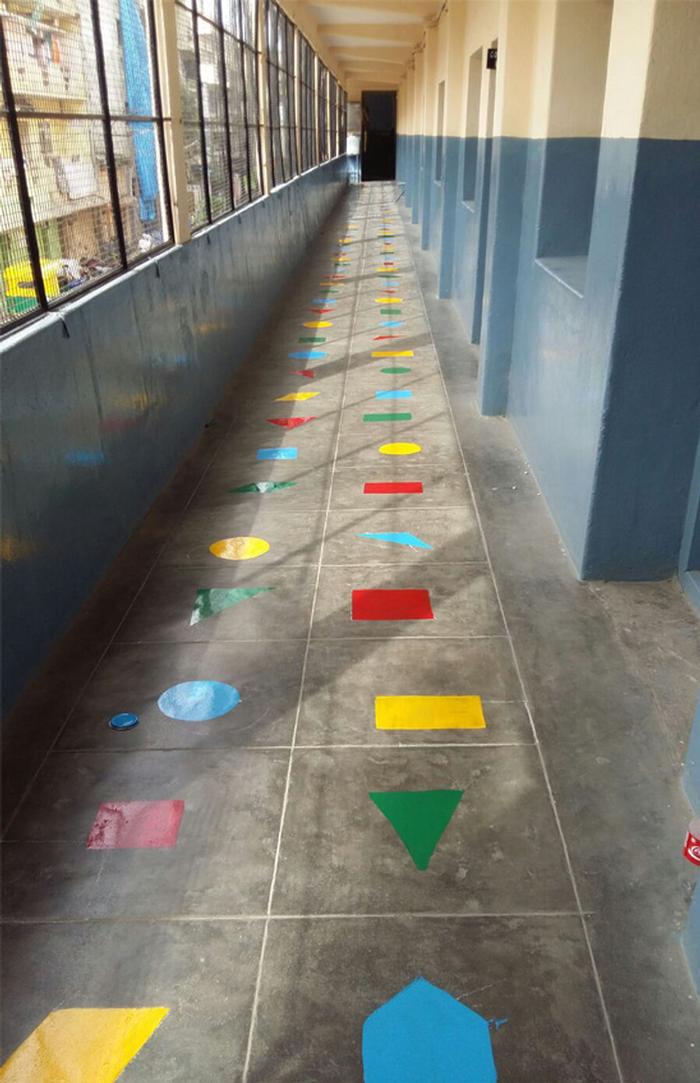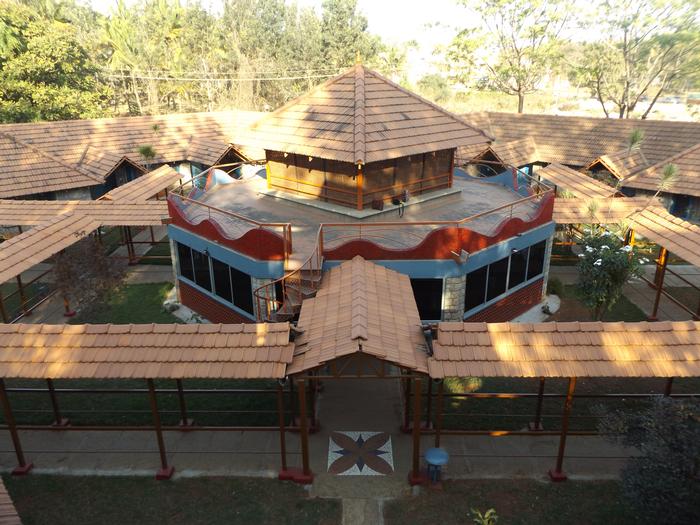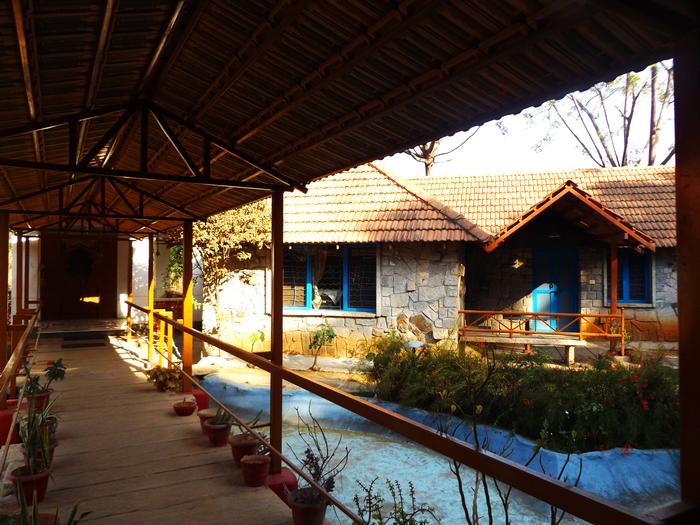[ID:2858] So-less to Solace: Solving issues across generationsIndia It was the day of Sankranti, the local festival celebrating the harvest, as we set out to visit our neighbour, Karthik at what he called his new home. While taking a stroll around with him, we chanced upon an old friend of ours, Kanika. It was at that moment when the two interacted that we were struck by the similarities of their life states. They both found solace in physically different places but ultimately learnt from the same teacher- Architecture. One learnt in order to live a successful life while the other perceived life as a perpetual learning process.
What set the two apart? Kanika is seven years old and Karthik is aged sixty-seven.
Social artistry can be either an extension of architecture or the very definition of it. In our quest to find the one element that portrayed the social art of architecture, we realised that there is no one definite response here. Hence, we present more than one angle in answering the question with two different perspectives.
PART TO WHOLE
Fact: While the Right of Children to Free and Compulsory Education (RTE) Act, states that schools should have graduate teachers in upper primary schools and higher secondary teachers in primary schools; the solutions to these problems don’t surface overnight. According to a survey conducted by Sarva Shiksha Abhiyan, 63% of children between the ages of 11 to 13 dropped out of school in Karnataka for the year 2017-18. Quoting provisional figures for 2015-16 released by the District Information System for Education (DISE) along with statistical findings of the International Centre for Peace and Development (ICPD), an estimated of 48.87 percent school teachers in the urban and rural districts were not even graduates. Bangalore Mirror, a local newspaper also stated that “Of the 4.25 lakh teachers in Karnataka’s urban and rural schools, 2,08 lakh teachers do not have a graduate degree, of which some 3,000 teachers had passed below the secondary school, 63,000 secondary and 1,42 lakhs higher secondary.”
Findings by ICPD exposed the bitter truth about dropouts. About 40% of first-grade entrants never complete primary school. Of the rest who do, poorly qualified teachers, inadequate teaching materials and outmoded teaching methods result in a low quality of education and students end up in little or no real learning but simply treat schools as a place to keep them busy during the day. Again, issues such as this cannot reverse itself over a short period of time, for these issues concern not only authoritative bodies but also involve changing the mindset of the public which is certainly long-term goals.
In a country struggling to educate its society, what if the building you spent most of your day in taught you better than books?
Every morning at eight, Kanika leaves her house, which consists of a makeshift aluminium sheet roof loosely supported by four dilapidated brick walls only to change two overcrowded buses and finally reaching the gates of “My School”, her home away from home as she calls it. At first glance, the school with whitewashed walls feels dull, which makes her statement all the more perplexing. But once she swings the door open, and dashes past the dusty playground, it all makes sense. The door opens to reveal the ideology of Building As a Learning Aid (BALA), a design model conceptualised by Kabir Vajpyi with a very simple principle. The building itself becomes a teacher.
Kanika walks through the corridor, instead of being surrounded by shabby un-plastered walls, her fingers trace the path of a mural displaying a prominent river, Kaveri thus giving her a map of the many states it flows through. Instead of a mere sentence lost in a textbook, geography gets visual here. Her eyes then measure the angle of the door on the protractor painted on the floor of her classroom. Open the door at 60 degrees to check if she was late and 90 degrees to check if she’s early. Kanika loves mathematics and when asked what she enjoyed during math class, her eyes twinkled as she shrieked, “fractions!” and pointed at the windows in the classroom. Here, four small shutters formed a large square window that was painted a bright blue. On each of the panes were painted 1/4, 2/4, 3/4 and 1. As the teacher opened each shutter, the concept of parts and whole made sense to her. When Kanika looks up, she notices how the three wings of the fan that were painted red, blue and yellow were now a rainbow as the blades rotated. Come last period and in the Computer Lab, she stares up to an aerial installation on the ceiling to see a computer model connected to prominent landmarks of the 7 continents spread across the room through strings and understands the concept of World Wide Web, the foundation stones of technology.
“Lakhs of schools across the country in rural areas, may not have the basics in terms of the environment, which is so important to learning. You could even have schools without a territory or boundary but you have caged windows which are like a jail for the kids and this is where we expect our kids to go” (as said by Kabir Vajpyi at Ted talk held at Eicher School) The attention span of a 7-year-old to do a certain task, by listening to a teacher, is in a mere 14 minutes to 35 minutes’ window. As whimsical as the young mind likes to wander, the immediate distraction is simply their immediate surroundings. Instead of trapping children within just four plain walls, barred by windows and expecting them to learn in this kind of environment, BALA not only aids the teacher in efficiently extending the concentration-time span by making the lesson more interactive but also taps into the timeframe that students tend to look around them.
After the implementation of BALA, “My School” saw an attendance hike from 62% to 83%. Year after year, as Kanika and her friends are promoted to higher classes on higher floors, the scope of interactive learning do so too. From the number lines donning the corridors which engraved the basics in them, to metric scale measurements to the timeline of the Indian democratic. By incorporating visuals on the risers and treads, each step the students tread on reminded them to revise their numbers, geometric shapes and colours, for BALA found a way to engage and guide the students in every step of the way, quite literally.
WHOLE TO PART
Fact: Among the nine hundred thousand senior citizens in Bangalore, 75% of which suffer through discriminatory, financial and psychological abuse. With the trend of joint family structure transitioning to small nuclear families, lack of senior citizen friendly public spaces and over 50 percent of them being financially dependent, it is the time we acknowledged this as a pressing issue. Dear ones who held the status of patriarchs are slowly headed towards being the ignored sector in our society. Engulfed by the fear of losing their identity and place in their families, they soon turn to establishments that serve the elderly. Only to further hit a roadblock. Under the Integrated Programme for Older Persons (IPOP) supported by the Centre, there has been a decline from 269 homes in 2012-13 to a dismal 137 in 2014-15. With most homes set up by private institutions, the state struggles to meet the needs of the society that contributed to our present.
But, what if a building reminded one of the gracefulness of old age thus solving this very issue?
At 67, Karthik had become the neglected member of his family and volunteered to move to a place he could call home. Among private homes for senior citizens that were not easily affordable by middle-class families, Shanthidham Retirement Home proved to be the needle in the haystack. A community designed by Architect Renu Mistry, Shanthidham’s planning and design principles aimed to reform the indignities and loneliness that the changing societies were bringing.
On a typical day here, you would find Mr Karthik, energetically striding along the shaded pathways amidst foliage. One step after another, he loved looking at the flowers bloom and the birds sing. Nested as a green pocket in the outskirts of the city, he eagerly looked forward to visiting the garden and the long chats he would have with his newfound friends by the Amphitheatre. As he walked along the pathways, hands resting on the handrails that helped him find his way, he wore a smile as he reached the common dining hall. Filled with 50 lives that felt like they were home, this space was an audience to stories of over 50 lifetimes.
Built entirely of stone and roofed by a traditional clay tile sloping roof, Shanthidham recreated the traditions of the past that mimicked family togetherness. It was not merely a home for the ignored but a community of the blessed. The heart of this community is the prayer hall that fills itself with residents’ chants in the evening, magnifying their enthusiasm to re-establish an identity. He has a clear view of the temple from here, that they all seem to find strength in. If you sauntered around this closely knit community, you would find cottages as accommodation. Keeping in line with inclusive philosophies, rooms functioned on a sharing basis. Provisions were also made for visiting family members as guest rooms set in a separate block. Each cottage has an individual porch with tables and benches that is typical of a traditional Indian home. Most residents gleefully stated that quiet evenings spent there with the newspaper were most cherished and the evenings filled with gossip about grandkids and other family members were equally enjoyable. Every festival was celebrated with zeal and in full grandeur. From hoisting the flag patriotically to playing with colours on Holi, the community style planning assured residents a cohesive space that creates a home away from home.
The key aspects of health, housing and dignity were well cared for by the architectural design of this home. It is built entirely of sustainable materials ranging from stone, clay tiles, salvaged wooden frames for doors and windows to techniques such as skylights, cavity stone walls for insulation, mud plaster and bamboo. “The architecture of Shantidham weaves local traditions and a modern vernacular philosophy distinctively.” says the Renu Mistry.
Articulately crafted clusters of small and large open spaces, the placement of the blocks effectively exploit all that the site has to offer. The ideology of low rise medium density development enforced comfort levels in residents as the built was of close relation to the human scale. A great deal of warmth and welcome was achieved by ensuring an environment vital for living and learning.
TWO SIDES OF THE SAME COIN
Our fondness towards Mr Karthik propelled us to visit him on this auspicious festival, Sankranti. Certain schools follow a tradition of visiting places like orphanages, retirement homes or even prisons during such festivals to perform a small cultural program for the residents and spread the festivities in communities beyond their own. It was because of this notion was taken up by ‘My School’ that we chanced upon Kanika and Karthik together. Experience is the mother of all wisdom. While being a part of two beautiful lives, we recognized two interesting perspectives on learning. Education that enabled one to fly the nest and experience things not limited to her low-income lifestyle on one hand and experiences that taught one to reflect and revive his identity in the society. Experiences that gave him back a bit of himself with each waking day.
For just about anybody, they were individuals from parallel walks of life. However, these parallel lines meet, in perspective. Let us ask ourselves, at what point in life do you stop learning? What is the expiry date of the learning process? Does learning only come out of books that are suggestive of what educational authorities dictate? If life is indeed a series of lessons learnt in the most unusual places and taught by instances, are not Kanika and Karthik on the same boat, staying afloat on the same current, guided by the very same pole star that we call architecture?
Karthik and Kanika both represent sections of a society that are seen as a different set of species, because of where they stand in their walks of life. In addressing the question of what exactly is the social art of architecture, we find that it offers a catharsis to these marginalised communities, breaks barriers and presents them a world with an equalised society where differences are celebrated.
References http://www.mistrys.com/projects.html#22 http://www.firstpost.com/india/govt-schools-struggle-with-poor-facilities-unskilled-teachers-and-high-dropout-rates-2848972.html http://udise.in/RuralUrban.htm http://www.icpd.org/education/national_education_program_for_india.htm http://www.thehindu.com/opinion/op-ed/on-indias-focus-on-senior-citizens/article8668702.ece https://www.youtube.com/watch?v=0hm8ys24y-4
If you would like to contact this author, please send a request to info@berkeleyprize.org. |




